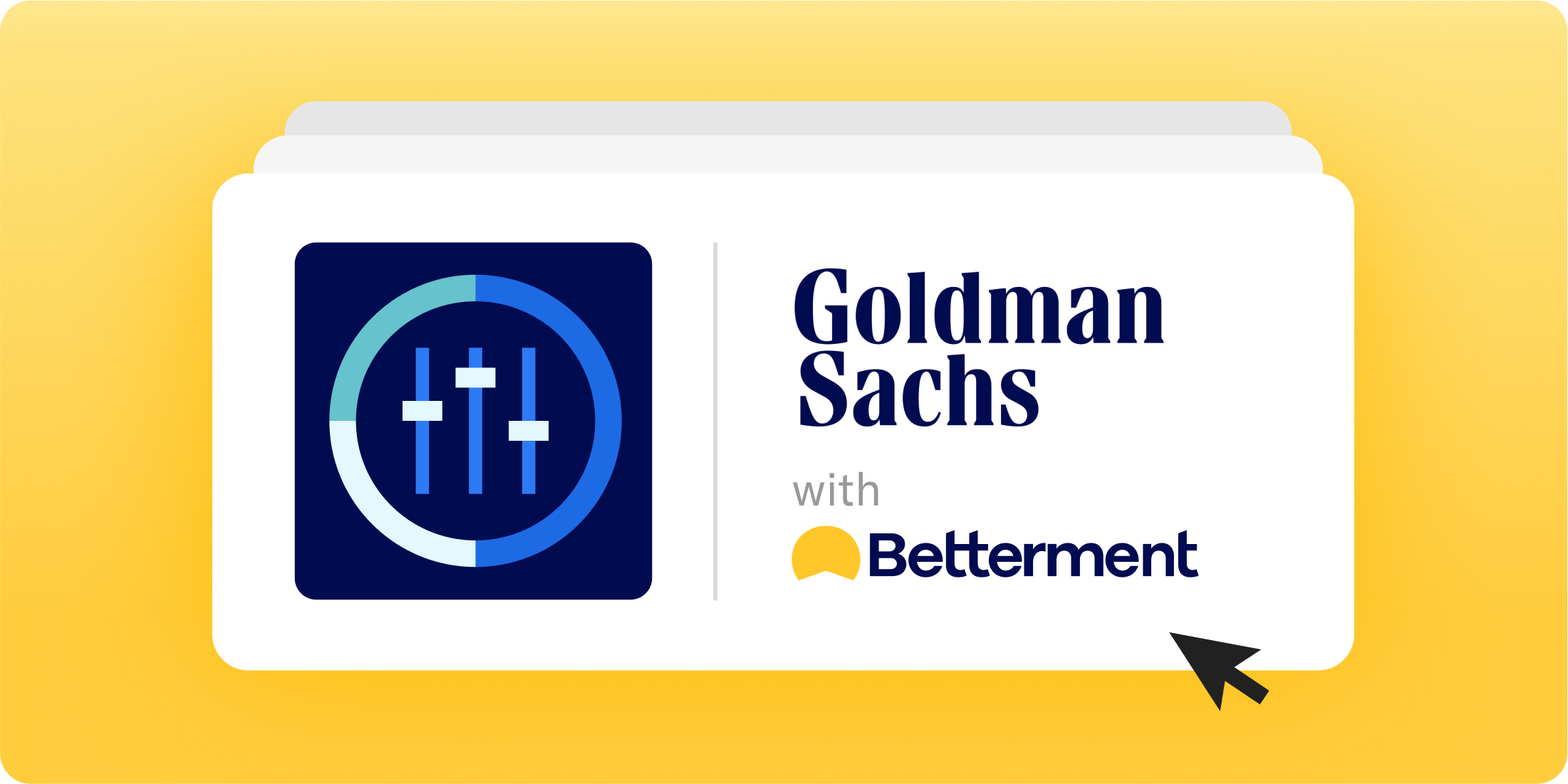
Key Takeaways:
- As interest rates eventually begin to drop, bonds may be a good way to earn extra after-tax yield compared to high-yield cash accounts in 2024 and beyond.
- For high-income investors in higher federal tax brackets (32% and above), certain bond strategies may offer tax advantages compared to high-yield cash accounts.
- The industry-first Goldman Sachs Tax-Smart Bonds portfolio is personalized by Betterment to your tax situation and seeks to provide a way for higher-income investors to get a tax-smart strategy with potentially lower risk than stock investing and is designed to increase after-tax yield.
Over the past few years, investors have been able to put their cash to work in high-yield savings and cash accounts. In fact, the Fed has raised rates 11 times during its current cycle of interest rate hikes beginning in 2022.
But those rate hikes have come to a pause. The last rate hike was in July 2023, and the world is waiting for the Fed to lower rates.
So what does that mean for investors?
Once the Fed lowers rates, those high-yield savings and cash accounts will follow suit, likely no longer offering the attractive 4% or even 5%-plus yields.
The case for bonds in 2024 and beyond
As interest rates begin to drop, bonds may be a good way to earn extra yield in 2024 and beyond. Investors looking to continue to earn yield should consider three points:
- Variable interest rates on high-yield cash accounts will likely fall when the Fed lowers rates, but bonds, on the other hand, tend to benefit from rate cuts because as yields fall, bond prices rise and generate return.
- Bonds, especially short-maturity bonds, can be a good choice to help preserve your money compared to stocks.
- For high earners, especially in the 32% or greater tax bracket, certain bonds may offer tax advantages compared to high-yield cash accounts.
As the Fed reduces rates, bonds may be a wise alternative. Just a reminder, even short-term bond portfolios carry a bit more risk than cash management accounts, which are generally FDIC-insured and provide the stated yield. Bonds are securities that are exposed to market volatility but, in return, provide the opportunity to increase after-tax yield, which is the money you actually get to keep after paying taxes.
Meet the Goldman Sachs Tax-Smart Bonds portfolio
Our new Goldman Sachs Tax-Smart Bonds portfolio is industry-first, representing a unique opportunity for higher-income investors.
The portfolio is designed to reduce risk compared to investing in stocks and increase after-tax yield compared to a cash account.
Betterment does all the work for you behind the scenes to personalize the portfolio to your tax situation while leveraging Goldman Sachs’ expertise in bond markets to aim to generate additional after-tax yield.
But how does the portfolio work?
Let’s look at an example of a hypothetical $100,000 investment…
The power of after-tax yield
- The Goldman Sachs Tax-Smart Bonds portfolio is designed to generate additional after-tax yield compared to a cash account.
- By increasing after-tax yield, you may earn a higher return after taxes and fees than a regular high-yield cash account, which can be an advantage for high-income investors.
Take a look at the standard yield and the after-tax yield of a hypothetical $100,000 placed in our Cash Reserve portfolio and our Goldman Sachs Tax-Smart Bonds portfolio by an investor in the 35% tax bracket.*
|
Pre-Tax Yield |
After-Tax Yield** |
Take Home on $100,000 |
|
|
Cash Reserve |
5.00% (variable)* |
2.60% |
$2,595 |
|
Goldman Sachs Tax-Smart Bonds Portfolio |
4.61% |
2.85% |
$2,864 |
**Annualized Blended 30-day SEC Yield. After-tax assumes individual filing single in CA, 35% federal tax rate, and $260K income. Results may vary substantially.
There are important risks to consider in comparing these products to each other, which we discuss in further detail below. The information provided is not tax advice and customers should obtain independent tax advice based on their particular situation.
You can see that after taxes are paid, the Goldman Sachs portfolio comes out on top in our hypothetical scenario, which is illustrative only.
What is after-tax yield, exactly?
- After-tax yield is the amount, expressed as a percentage of the investment, that you can expect to receive from an investment after paying taxes.
- We use after-tax yield to help you compare the potential profitability of portfolios that are taxed differently, such as our cash and bond portfolios.
- Municipal bonds are exempt from tax at the federal level, offering an after-tax benefit to higher income investors. Treasuries are exempt at the state level—particularly advantageous for those residing in high income tax states.
- After-tax yield for the Tax-Smart Bonds portfolio is calculated as the weighted average of 30-Day SEC yields for each ETF in the portfolio, net of fees (0.25%), and net of taxes, as determined by your Betterment profile data. After-tax yield reflects interest earned after fund expenses.
How does the Goldman Sachs Tax-Smart Bonds portfolio take after-tax yield into account?
Here’s how we work to take after-tax yield into account:
- First, Goldman Sachs built the portfolio with a mix of short-term bond ETFs containing treasury, municipal, and corporate bonds, which seek to offer lower risk than stock investing, leveraging their expertise in bond markets.
- Next, Betterment uses the information that you provide about your tax situation, including your state residency, federal tax bracket, and income, to personalize the portfolio for you.
- Finally, the portfolio strategy considers market conditions and taxable equivalent yields monthly. When you let Betterment know that your tax situation has changed and as interest rates shift, Betterment will rebalance your personalized portfolio.
At Betterment, we believe in investor choice. That’s why we continually create innovative portfolios to provide you with options based on your risk tolerance and desire for yield. And as interest rates evolve, your cash should still work for you.
When it comes to considering risk and yield—and choosing the portfolio right for you—we like to compare portfolio options across a few variables.
When you sign up for a bond investing account, Betterment will provide you with a personalized after-tax yield to help you compare our Cash Reserve account to our bond portfolios. Based on your degree of risk tolerance and the various after-tax yields of these three products, which are calculated based on the information provided to Betterment in your financial profile, you can select which portfolio is right for your goals and financial situation. Get started today.









